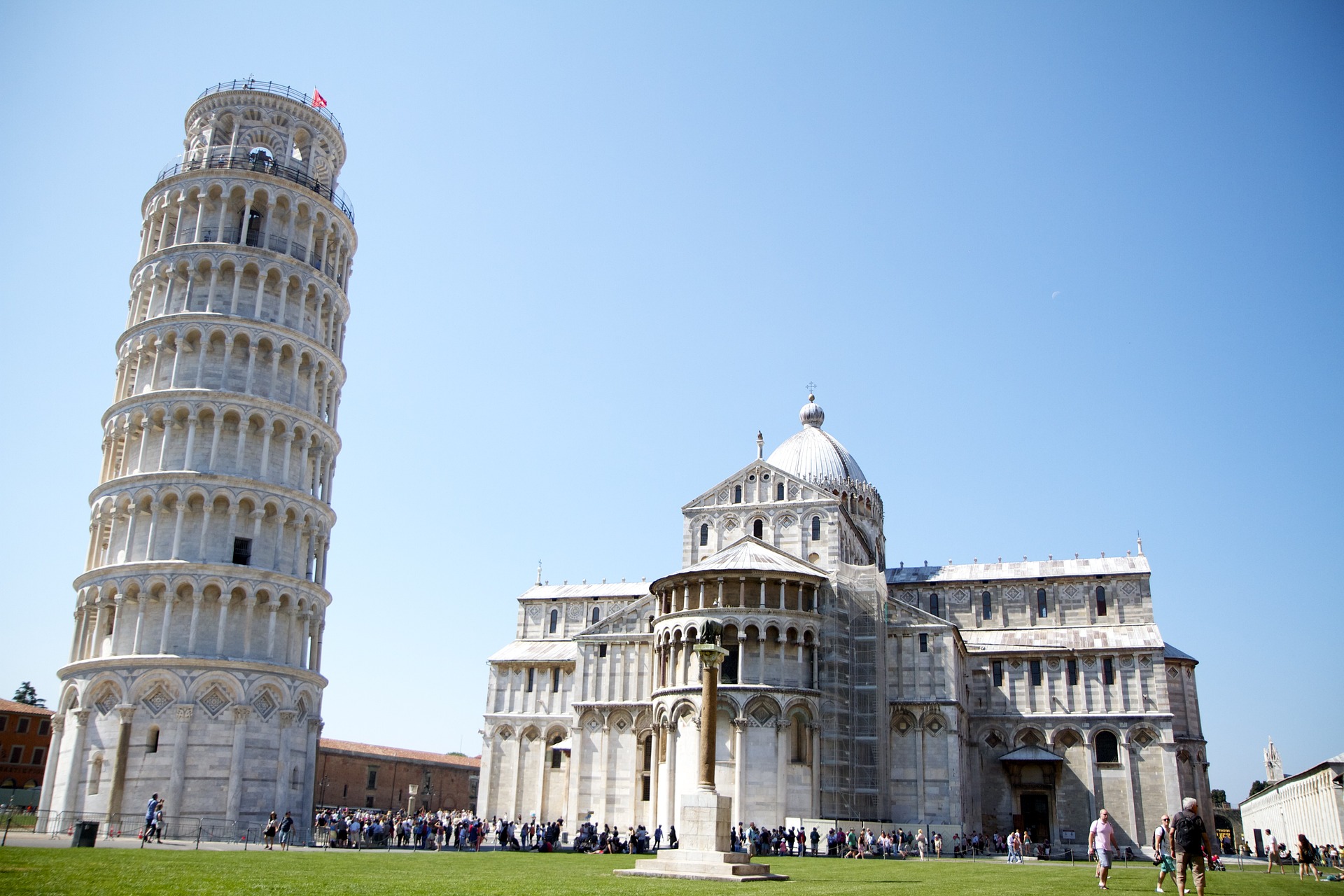It is one of the most famous monuments in Italy and the world, but its history is unknown. The Tower of Pisa is the bell tower of the Cathedral of Santa Maria Assunta, located in the very famous square of Duomo (UNESCO World Heritage Site since 1987).
A work of centuries
A characteristic of this tower is that it leans to one side in a visible, unique, and memorable way. The reasons for this inclination date back to its construction, and its safety and stability have been guaranteed by years of operation, restoration, and maintenance.
When was the Tower of Pisa built?
Work began on August 9, 1173, and was not completed until the mid-14th century. The official opening took place in 1373. Today it is a destination visited by hundreds of thousands of tourists annually.
The size of the Tower of Pisa
It is a freestanding bell tower that stands 57 meters tall (58.36 meters if you include the foundation). With a mass of 14,453 tons, the curved line prevails here, with round blind arcades and six floors with loggias.
The tower’s inclination is due to a series of differential fractures, that is, a series of uneven fractures that affect the basic structures and become visible after the completion of the system itself. The causes lie in the form of the soil, which consists of soft, ordinarily consolidated clay. In addition, in the area of the tower Auser, in ancient times, ran a river bend. The slope is a characteristic feature of almost all the buildings in the square, although to a much lesser extent.
A real danger to the tower
Over the centuries, the slope has increased considerably due in part to the pull of the groundwater below. In 1993, concerns began to surface about the strength of the tower, which at that time had reached a slope of 4.47 meters, or about 4.5 degrees. In March 2008, the building was called the final consolidation stage with a slope of 3.97 degrees.
- source: I viaggi del Viandante/picture: Bild von schmidmatthieu auf Pixabay
This post has already been read 3103 times!



